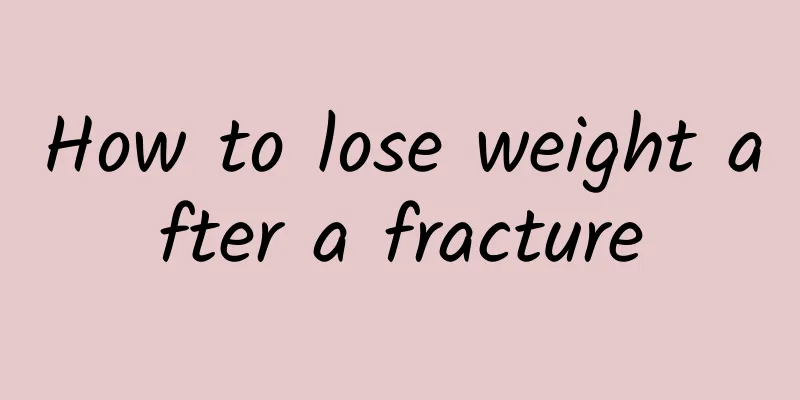Does cervical spondylosis cause headaches?

|
In real life, we often hear many people talking about some harmful effects of cervical spondylosis, but there is no definite conclusion as to whether headaches are caused by cervical spondylosis. Therefore, whether cervical spondylosis can induce headaches is also something that everyone is very curious about. In order to help everyone figure this out, the following is a special explanation on whether cervical spondylosis can cause headaches. Generally speaking, once someone suffers from cervical spondylosis, the symptoms are varied. Moreover, since the current clinical treatment of cervical spondylosis is not perfect, it is extremely difficult to completely cure cervical spondylosis. However, patients with cervical spondylosis can understand their symptoms and try to avoid some factors that induce its attacks. Symptoms of cervical spondylosis: (1) Neck symptoms: neck pain, neck stiffness, neck rigidity, limited movement, neck muscle spasms, difficulty in neck movement, a feeling of being tied up, "scratching", a feeling of bloating in the neck, a feeling of "stiff neck", etc. The head often tilts to one side, and it is difficult to raise, lower, or rotate the head. (2) Upper limb symptoms: numbness, pain, movement and sensory disorders, hyperalgesia, electric shock sensation, finger numbness or tingling sensation, hand weakness, heaviness, unstable holding, tremor paralysis, upper limb muscle atrophy, and limited shoulder peripheral motion. (3) Lower limb symptoms: Radiating pain, coldness, numbness, chillness, or hot pain in the lower limbs, weakness, inability to stand, walk, or squat may occur. The symptoms may worsen after activity and improve after rest, or worsen just after rest. They may improve after activity but worsen again after further activity. It is related to weather changes, getting worse when it is cold, getting better when it is hot, or not being obvious. In severe cases, it may cause muscle atrophy, lameness, and decreased function. (4) Ocular symptoms (neck-eye syndrome): unable to open eyes and can only lie flat with eyes closed; eyes feel swollen, heavy, and unable to open eyes; accompanied by blurred vision, decreased vision, flashes of light in front of the eyes, dark spots, and visual field defects; excessive movement of the neck may cause eye pain, eye muscle spasm, transient blindness, and conjunctival congestion. (5) Headache: radiating pain, shooting pain, numbness, distending pain, deep pain, hot pain, cold pain, local pain, pain in the forehead, pain on both sides, pain at the top of the head, mild pain, moderate pain, severe pain. In severe cases, the pain can be relieved by “banging the wall” or even vomiting. (6) Dizziness: Headache, vertigo, or even nausea, vomiting, transient blindness accompanied by dizziness, heaviness in the head, etc., or even the feeling of fainting or sudden fainting, and waking up later as a normal person. (7) Memory impairment: Memory is significantly reduced, the patient loses things, forgets to do something, cannot remember what happened yesterday, and even cannot remember whether he or she has eaten. (8) Heart (cervical heart disease): symptoms of cervical coronary heart disease such as palpitations, heart palpitations, shortness of breath, chest tightness, breath holding, fear, and precordial pain (no corresponding changes in the electrocardiogram). (9) Hypertension (cervical hypertension): symptoms such as increased blood pressure, dizziness, headache, blurred vision, and even nausea and vomiting. Blood pressure is high, irregular, fluctuates, blood pressure rises and then falls again after medication, rises and then falls again, or blood pressure drops too low after treatment. (10) Cholecystitis (cervical gallbladder disease): symptoms include abdominal pain, bloating, nausea, loss of appetite, weakness in the limbs, and pain in the liver and gallbladder area. (11) Chronic pharyngitis (neck pharyngitis): The pharynx is slightly congested or purple, eating is not difficult, the mouth is dry and there is a foreign body sensation, and the patient cannot spit out or swallow food. (12) Hemiplegia (cervical hemiplegia): Unilateral limb paralysis, numbness, swelling, even crooked mouth, language dysfunction, difficulty putting on shoes and taking off socks, unstable walking, etc. Brain CT is basically normal. ( 13) Spontaneous sweating (neck sweating): fever and redness of the limbs, excessive sweating on one side of the limbs or one limb or on the head, hands, feet, or distal ends of the limbs, which disappears naturally after a while and occurs at irregular intervals. (14) Anhidrosis (no sweat on the neck): cold limbs, fear of cold, little sweating on one limb or one limb, or on the head, hands, feet, or distal extremities, or even no sweating on the whole body, dryness, discomfort, and emotional instability. (15) Insomnia (cervical insomnia): Insomnia patients cannot fall asleep and can only fall asleep by gradually increasing the dosage of sedatives. In the short term, it does not affect the next day's work, but in the long term it affects work and study. Various treatment methods have poor effects. Dreaming: nightmares, long dreams, dreams about doing things, dreams about work, dreams about making friends, irregular dreams, etc. After reading the description of the series of symptoms that patients will experience once they suffer from cervical spondylosis in this article, I believe everyone has a very positive answer to the fact that cervical spondylosis can cause headache symptoms. Here we would like to suggest that everyone must take measures to prevent the onset of cervical spondylosis in their daily work and study. |
<<: What causes frequent headaches?
>>: How to treat cervical spondylosis
Recommend
Why is the stool green?
Green stool is a common phenomenon in daily life....
What is the effective treatment for body odor?
Body odor is the most troubling problem. Both men...
Can Japanese encephalitis be cured?
Japanese encephalitis is a very common disease at...
Red bean hot compress effect
When it comes to removing moisture, I believe man...
The role of polyglutamic acid
Polyglutamic acid, also known as natto gum or pol...
What should I do if I have chest tightness after lung surgery?
The lungs are important organs for our breathing....
Why does it hurt when women ejaculate?
During sexual intercourse, when the man ejaculate...
Lymph determines disease and life span
With the trend of keeping in good health, more an...
Bone protrusion beside knee
The protruding bone next to the knee may be a nor...
Testicular pain after ejaculation
When a man's physiological desires are reliev...
What's wrong with the red spots under the baby's eyes?
There are red spots under the baby's eyes, wh...
What is tricuspid regurgitation?
The tricuspid valve is an important component of ...
What medicine should babies take for viral infection
Children have relatively poor physical resistance...
Early symptoms of varicose veins
Varicose veins are a phenomenon that many people ...
Traditional Chinese medicine can treat spleen and stomach diseases according to the dialectical classification method.
Traditional Chinese medicine often treats spleen ...









